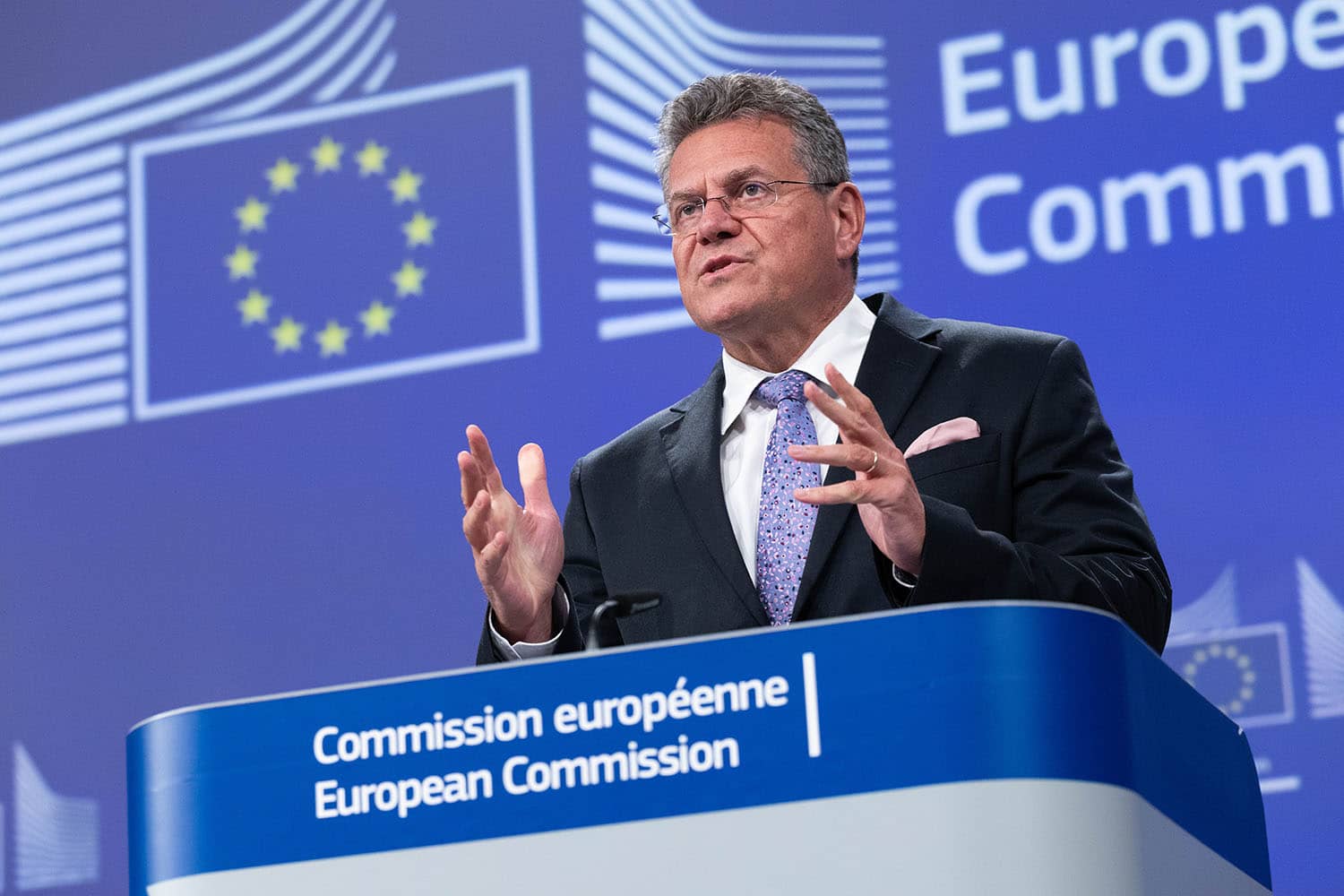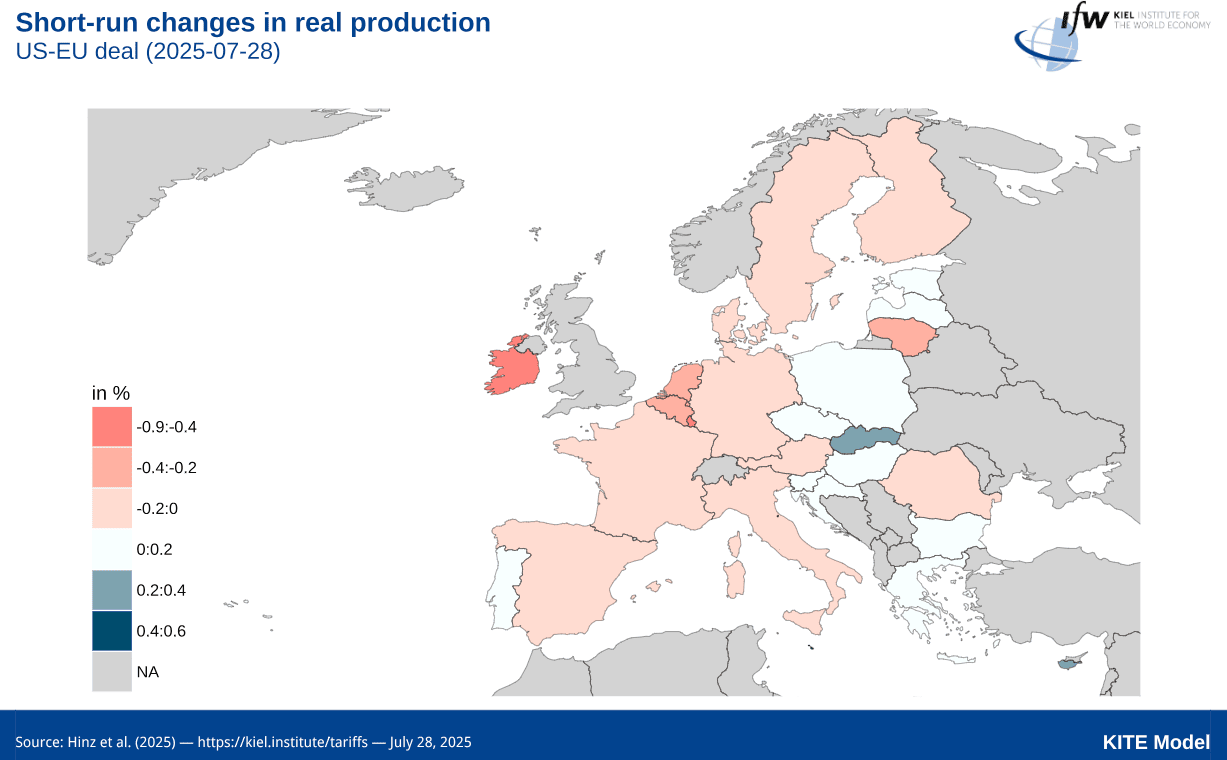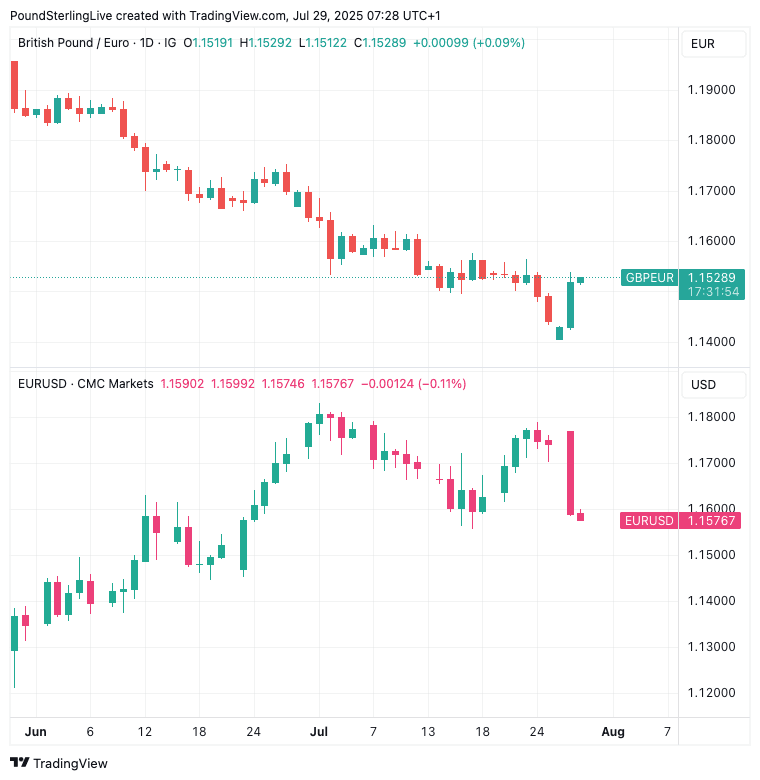
Photographer: Bogdan Hoyaux. Copyright: European Union, 2025. Source: EC - Audiovisual Service.
Trade relief weighs on the Euro's single currency.
The Pound to Euro exchange rate registered its biggest daily gain since April on Monday as global markets reacted to news of a trade deal between the EU and U.S.
The pair rose to 1.1539 from 1.1435 as it tracked a broader selloff in European assets that saw the Euro-Dollar exchange rate slide 1.30%.
European stock markets and the Euro fell as investors grew more confident that trade uncertainty was coming to an end, even if new tariffs would burden European exporters and raise domestic prices for U.S. consumers.
Many major news publications are pointing to weakness in the Euro and European stock markets as a sing that the EU got a bad deal, but we are firmly in the camp that we are witnessing the booking of profits of one of 2025's 'mega trades'.
"The biggest takeaway from yesterday's sell-off in the euro was that some of this year's highest conviction trades were becoming a little stale," says Chris Turner, head of FX research at ING Bank.
"We saw a huge move lower in EUR/GBP yesterday. Ex post, it could be seen as the UK having a better deal than the EU when it comes to trade. In reality, however, it was probably all to do with positioning, where opposing fiscal and monetary prospects between the eurozone and the UK had made long EUR/GBP one of the conviction trades this summer," he adds.
With the Euro being the prime beneficiary of U.S.-imposed tariff uncertainty, the end of the uncertainty means it must give back some of those gains.
A look at the details agreed - a flat 15% rate that will also apply to autos - shows there is nothing in the deal that was not to be anticipated, and if anything, it represents one of the better-case outcomes for European countries.
Germany's Kiel Institute, which monitors the effects of U.S. tariffs on the European economy, sees only small negative short-term growth effects for the Eurozone (-0.11%), with some countries (Ireland, Germany and Belgium) seeing larger potential growth cuts than others.
EU Trade Commissioner Sefcovic defended the deal, saying that it was the best that could be achieved and that the two sides would now start work on the details ahead of the signing of a formal and binding agreement.
With trade uncertainty set to fade, the prospect of the Euro's 2025 rally against the Dollar and Pound could stall, although we will need to see clear confirmation of this on the price charts before we start calling for materially higher levels in GBP/EUR and USD/EUR.
For now, we think the deal sets in motion a counter-trend relief rally by the Dollar and the Pound Sterling against the Euro that could continue short-term, meaning there is scope for Monday's price action to extend.
Looking forward, the Euro still has support in the form of a supportive interest rate policy outlook with the European Central Bank (ECB) likely to cut interest rates less than the Bank of England and U.S. Federal Reserve in the coming months.
Above: GBP/EUR (top) and EUR/USD at daily intervals.
"If trade policy uncertainty now largely dissipates, the hurdle for further ECB rate cuts should rise, especially given the unexpected hawkishness of ECB President Lagarde last week," says Mark Wall, an economist at Deutsche Bank.
Also, it is expected that U.S. tariffs will increasingly show up in the U.S. data pulse through to year end, which could diminish the Dollar's appeal, thereby restricting its advance.
This means that although the Dollar has scope to recover further, it doesn't bring a definitive end to the broader period of depreciation we have witnessed in recent months.
"For the U.S., tariff levels of around 15% seem to be something markets can live with and below levels associated with a looming recession. Extended tax cuts on income also need to be financed with higher taxes elsewhere, which the tariffs can be said to represent. However, the economic policy changes from the Trump administration, with obstacles to value chains and reduced access to labour (reduced immigration and increased deportations), are not good for long-term growth in the United States," says Elisabet Kopelman, an analyst at SEB.


